What is firescaping? 7 vital things you need to know to protect your yard from wildfires
If you live in an area threatened by wildfires you can reduce the risk to your home with these clever landscaping and planting ideas


The firescaping trend is big news right now, especially in arid regions where the threat of wildfires is most prevalent. Firescaping refers to using fire-resistant plants and landscaping methods used to make the exterior of your property naturally safe from wildfires.
If you live in one of the regions prone to wildfires, you'll want to find out the best way to protect your home. The good news is you can decrease your fire risk without compromising biodiversity, the local ecosystem or your planting style, and there are plenty of native plants to choose from that are adapted to coexist with fire.
There's a lot to take on board, so we asked the experts to help explain the steps necessary to prevent fire damage to your property while enhancing your garden landscaping ideas, too.
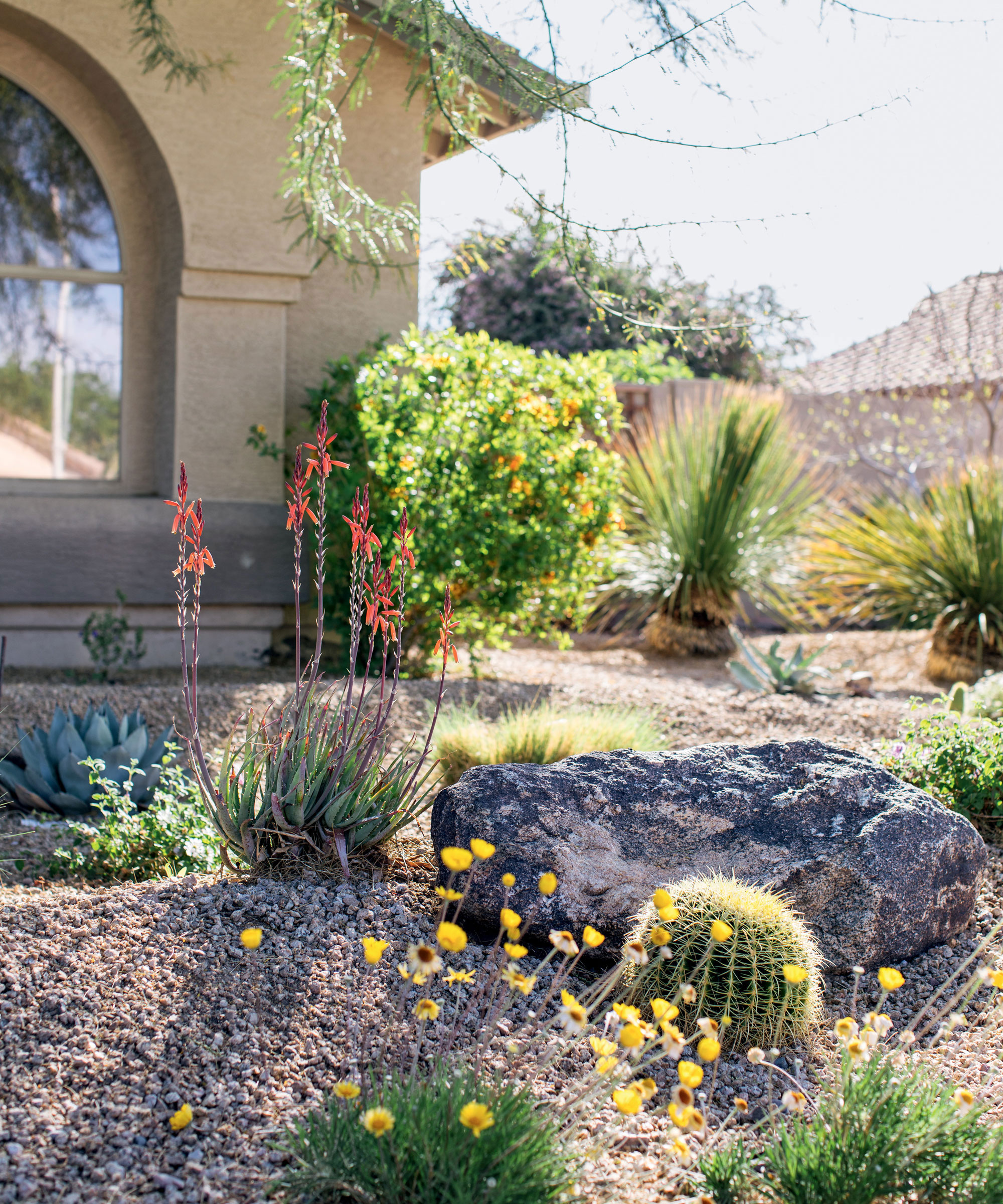
Fire-resilient landscaping can protect your home from wildfires
Why is firescaping your yard important?
Anyone living in wildfire-prone areas like California, Oregon and Washington will know that the fire season is getting longer and wildfires are become much bigger in these regions.
'Extreme fire events are becoming more frequent due to warmer and drying conditions,' according to Adrienne Edwards and Rachel Schleiger, authors of Firescaping Your Home: A Manual for Readiness in Wildfire Country, available on Amazon.
'At the same time, more people are choosing to live adjacent to fire-prone wildlands. Living in fire-prone landscapes should not mean that you must get rid of all the vegetation within hundreds of feet of structures. Landscaping in fire country is more nuanced than that. The right firescaping strategy for your home will depend on your habitat.'
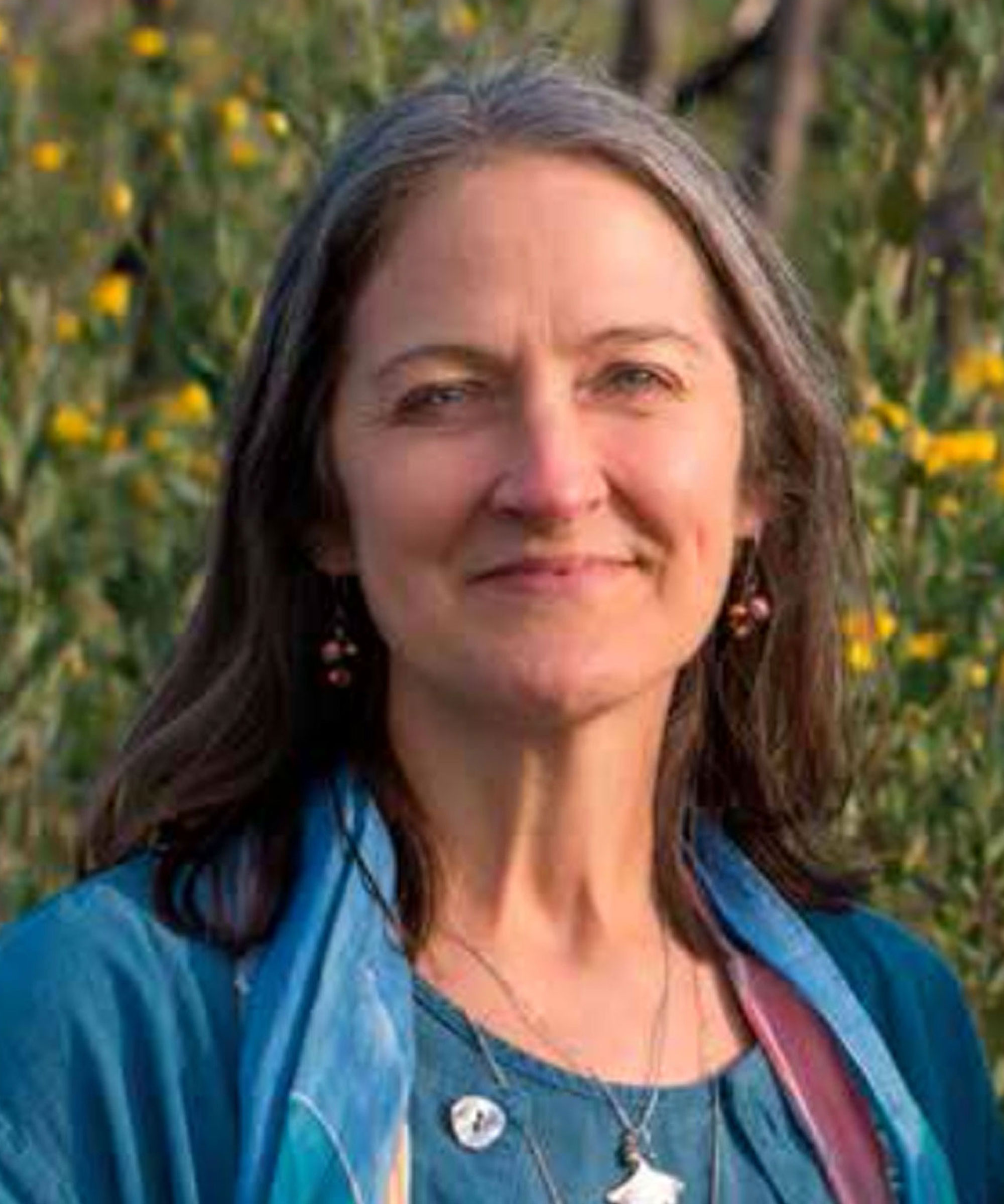
Adrienne is a plant ecologist, garden designer and environmental consultant. She began her botanical odyssey in the Southeast, spent time in the Midwest, and since 2006 has lived and worked in northern California. After more than 30 years' experience teaching, researching and consulting, plants continue to be her muse. She is currently a faculty lecturer at California State University, Chico.

Rachel specializes in restoration ecology. She has lived in the Sierra Nevada foothills most of her life. Her family and property survived the deadliest and most destructive western fire on record, the 2018 Camp Fire. Since then, she has developed a curriculum to teach about wildfire, both in person and online through Butte College. She is currently a faculty lecturer at both Butte College and California State University, Chico.
1. Zone the space around your property
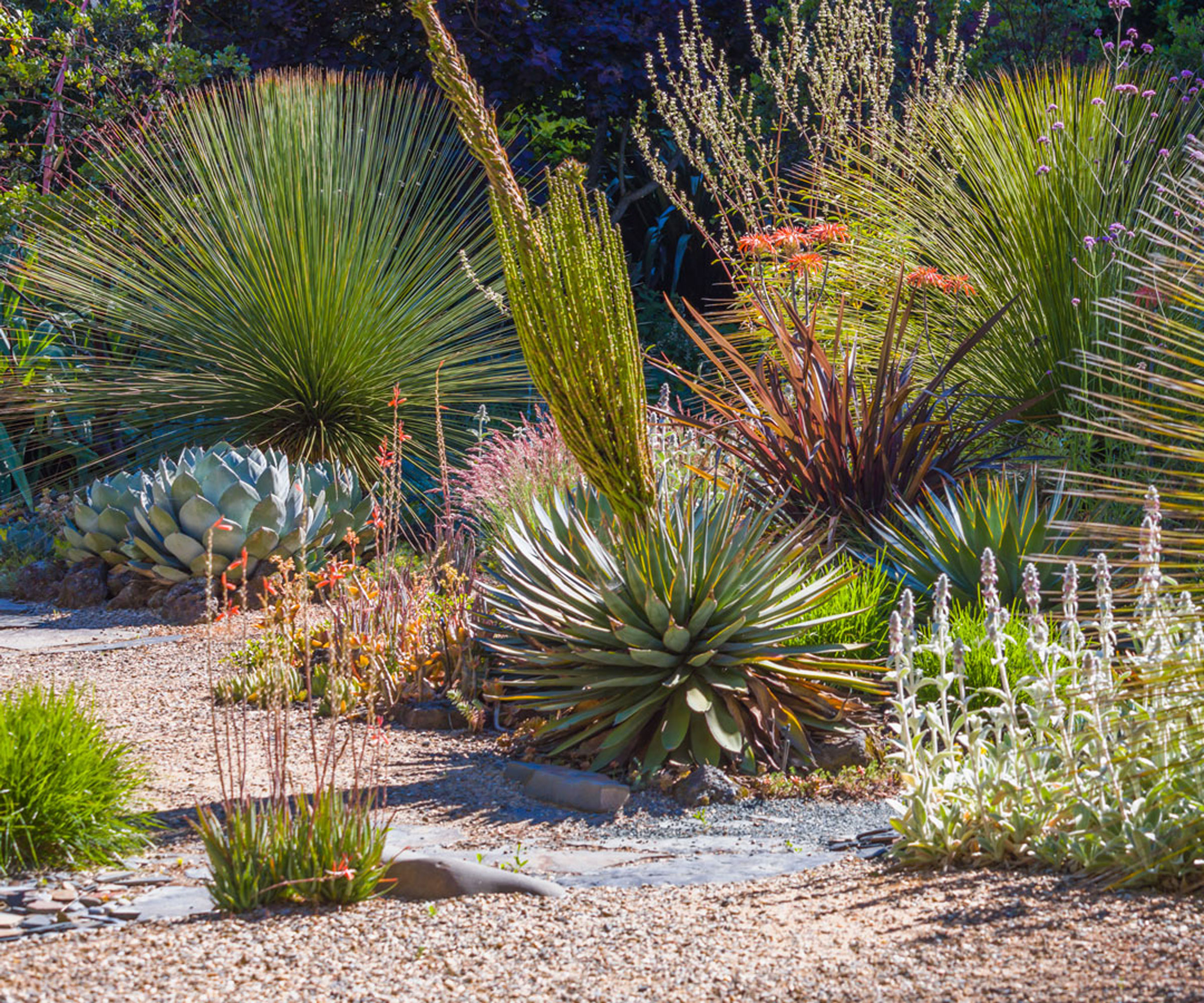
The planting in this zoned yard features agave, phormium and stachys byzantina
One of the key factors to making your property fire-resilient is how you manage the space around it, known as defensible space. Think in terms of zones to deal with this issue. The zone system is a strategy to help make your home resistant to fire in a landscape where plants could burn.
Design expertise in your inbox – from inspiring decorating ideas and beautiful celebrity homes to practical gardening advice and shopping round-ups.
'Defensible space can be organized into three main zones where the density of vegetation is strictly manipulated and monitored, and a fourth zone where habitat is maintained for ecological health,' advise Adrienne and Rachel. 'In the zones closer to the property, plant density should be low; in the zones further away the acceptable plant density increases.'
Adrienne and Rachel suggest this is how the different zones around your property shape up:
- Zone 1 is the non-combustible zone and extends from 0 to 5 feet from your property and anything attached to it. So if you have a deck attached to your house, measure the zone from there.
- Zone 2 (5 to 30 feet) is the 'lean, clean, and green zone'. This is the zone where you can fine-tune your focus on balancing beauty and fire resistance by planting grasses, shrubs, and small trees.
- Zone 3 (30 to 100 feet) is the fuel reduction zone. Imagine this area as a place that could burn, but not too hot, because you actively manage the quantity and distribution of fuel. Herbaceous plants can be placed at moderate to high densities in zone 3 as long as adequate spacing is allowed between clusters or plantings.
- Zone 4 (more than 100 feet out) is the habitat zone. Generally, this zone is outside your defensible space and tends to reflect more of the wild habitat in your area. On the other hand, if zone 4 overlaps with neighbors’ structures, the appropriate precautions for zone distances to structures apply.
2. Look at your choice of landscaping materials
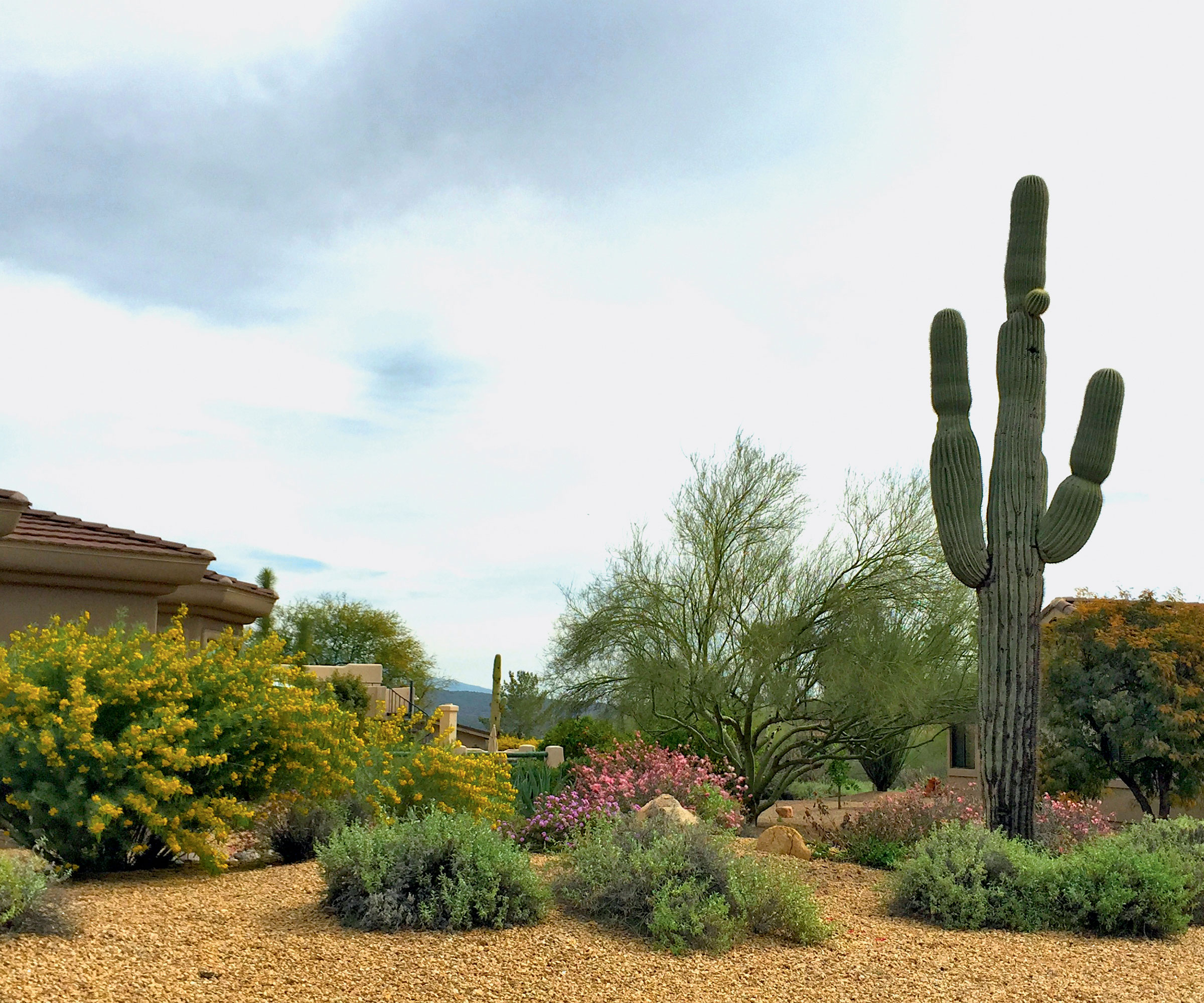
Make gravel and crushed stone your go-to materials for landscaping if you live in an area that's prone to wildfires
It's a good idea to consider replacing combustible materials whenever possible, as incorporating non-combustible elements into the landscape can act as a firebreak. Decks are often a challenge, for example, as they tend to be made from wood. Consider moving your barbecue way from the deck, especially if it uses an accelerant like propane.
'Incorporating hardscaping features such as gravel garden ideas, stone, or concrete for patios, walkways, and retaining walls can actually act as an effective barrier against fire,' says Jack White, senior director of technical services at Rainbow Restoration. 'These non-flammable materials can slow the spread of flames, which may ultimately protect your home.' It's also a great opportunity to incorporate landscaping ideas with rocks.
These hardscaping features not only enhance the look of your yard but also serve as effective barriers to slow down or prevent the advance of wildfire. Other ignition-resistant building materials include exterior grade fire-retardant wood lumber, and fire-retardant wood shakes and shingles. Your state fire marshal will be able to provide a definitive list of approved materials for your area.
3. Choose the right type of mulch
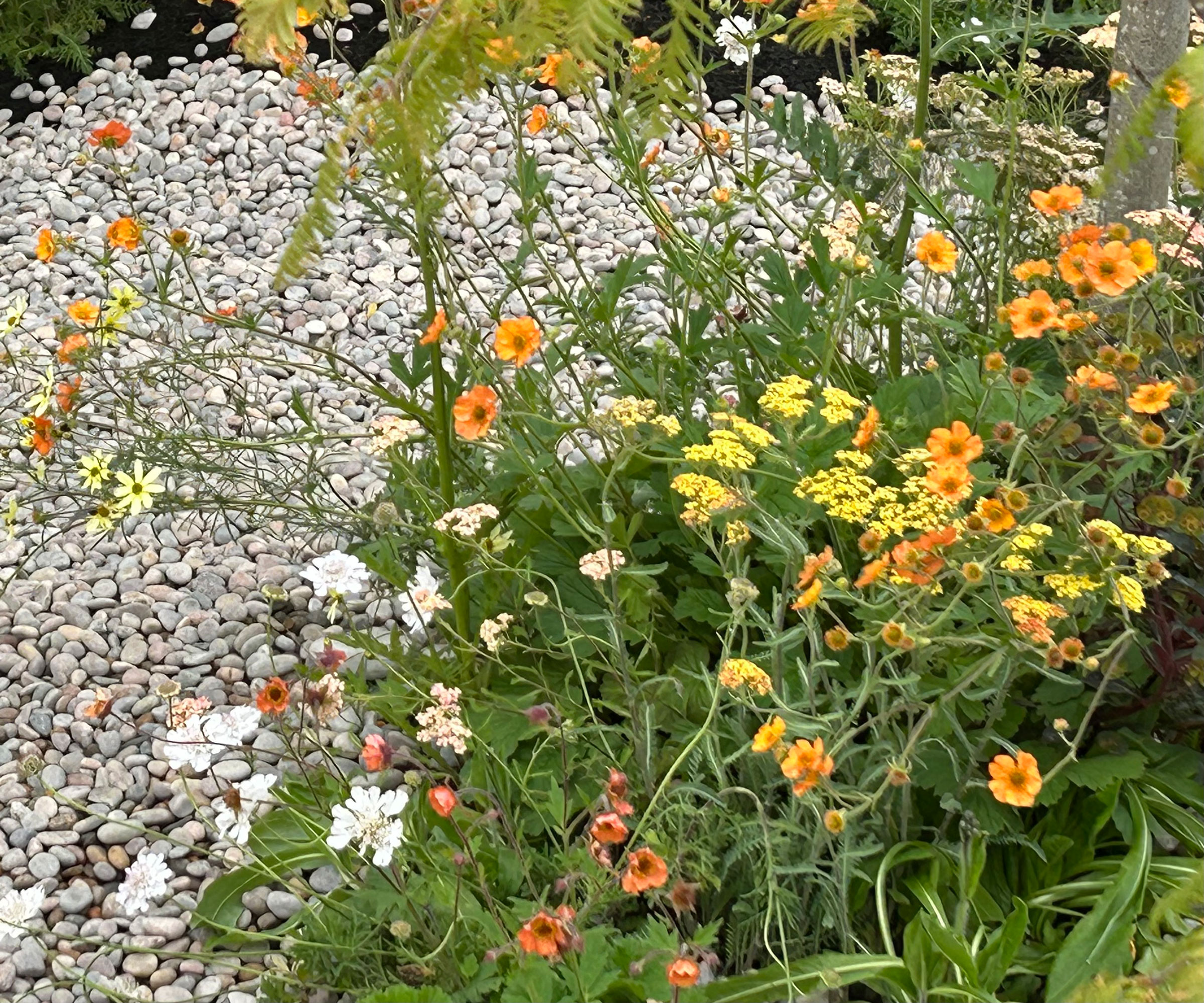
Forget combustible materials like wood chips. It's gravel all the way
Getting the selection and placement of mulch right is a key part of firescaping. If you're planning on using mulch within five feet of your home it should be non-combustible. Now is definitely a good time to look into the different types of mulch available.
In a high fire hazard area, it's particularly important to get it right as mulch can catch fire. If you’re mulching within 30 feet of your home, rather than using more combustible options like shredded pine straw or cedar, it’s preferable to use non-organic materials.
'Try to avoid using traditional mulch and instead opt for non-flammable options like crushed stone or gravel,' says Jack White. 'Mulching materials like wood chips can easily ignite and fuel a flame.'
Non-organic mulches can be used creatively in the yard to provide stunning design elements. 'Imagine crushing up old roof tiles for walkways, or recycling crushed glass or broken pots as mulch,' according to Adrienne Edwards and Rachel Schleiger. 'Generally speaking, desert plants should be mulched with rocks, and plants elsewhere can be mulched with organic or non-organic material as dictated by conditions. Breaking up combustible mulches with non-organic ones and bare ground can foster greater biodiversity.'
4. Make yard maintenance a top priority
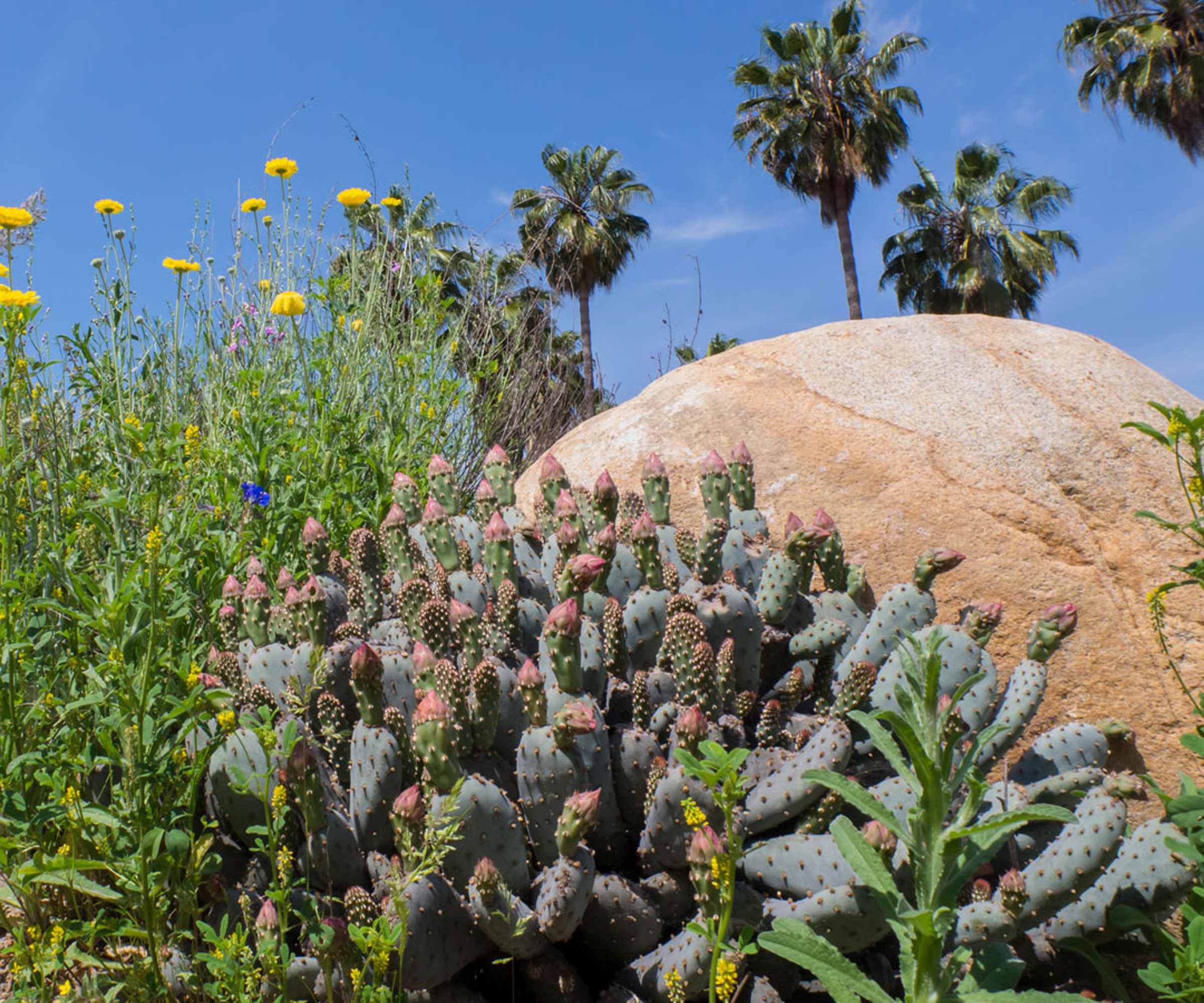
Key an eye on any build-up of dead foliage
Regular yard maintenance is key to reduce fire risk. Every couple of weeks, take a look around your property and clear away any debris such as dead or drought-stressed vegetation including dead twigs, needles, pinecones and leaves from your landscape to ensure that your defensible space is maintained.
'Firescaping is an ongoing process that requires regular maintenance,' according to the team at Fire Safe Marin, a non-profit organization dedicated to creating a safe, fire-adapted community in Marin County, California.
'This includes clearing away dead or dry vegetation, keeping gutters and roofs free of debris, and staying vigilant about the overall condition of the landscape. Maintaining a defensible space is key to ensuring the effectiveness of firescaping efforts.'
5. Work with your neighbors as part of a team
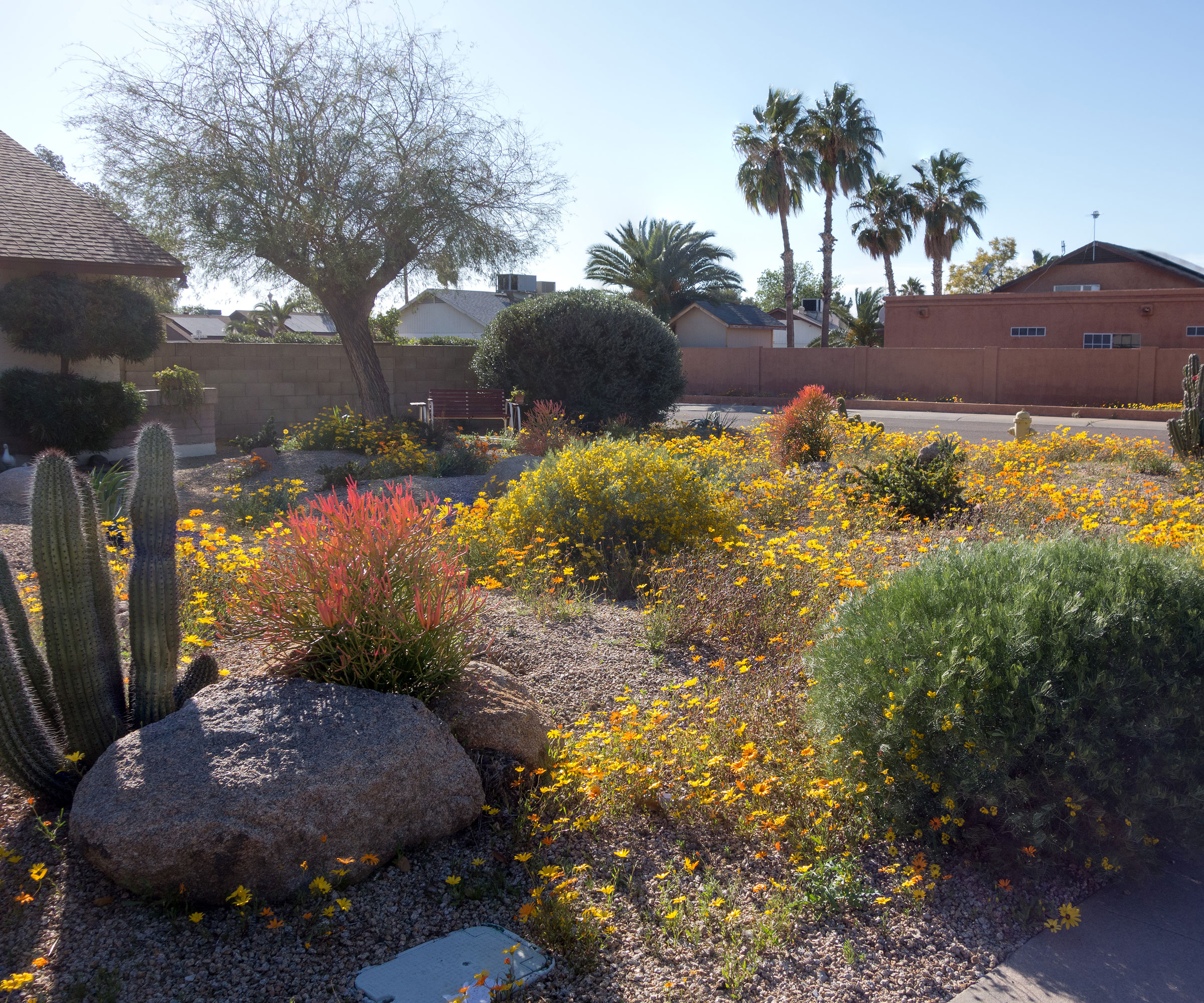
Talk to your neighbors to encourage collaboration between the whole community
Firescaping is most effective when communities work together to create fire-resilient neighborhoods. Collaborative efforts such as sharing information and front yard landscaping ideas, as well as making sure everyone is aware of the benefits of firescaping can strengthen community-wide defenses against wildfires.
'Consider collaborating with neighbors to put together a community fire prevention plan to enhance safety efforts should a wildfire happen,' suggests Jack White. 'Share with each other important contact information, emergency kit resources, and tools to help maintain trimmed yards across all properties.'
Make sure everyone in your community knows what to do in case of a wildfire emergency. All these tasks can significantly improve the overall safety of your home, family and neighbors.
6. Place plants carefully
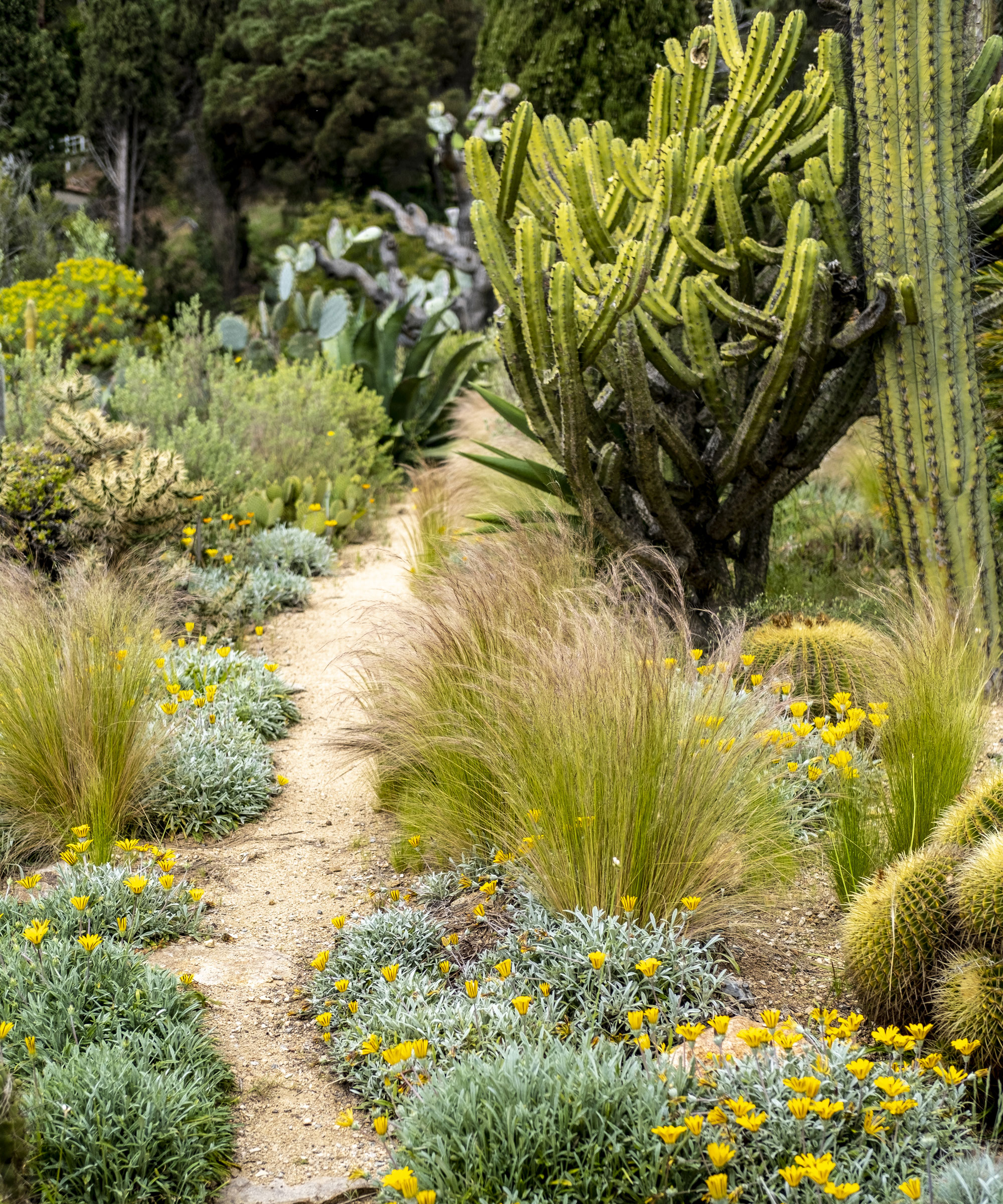
It's important to consider wildlife-friendly planting too if you want to encourage biodiversity in your yard
Strategic placement of plants is a key part of the firescaping trend and maintaining a safe distance between vegetation and your home. Trees should be pruned to prevent fire from climbing into the canopy, and shrubs should be spaced apart to reduce the risk of flames spreading.
'If you live in an area where wildfires are a factor, strategies to reduce the threat of fire to your home can be integrated into your landscape design,' says horticulturalist Noelle Johnson. 'Plants can contribute to the danger of wildfire on your property. Thankfully, there are strategies that you can incorporate to reduce this danger, from plant placement to the type of plant you choose.'
A major misconception about defensible space is that all vegetation (dead or alive) surrounding your home increases fire risk, so you must remove as much vegetation as possible.
'Unfortunately, fire risk is not that simple,' according to Adrienne Edwards and Rachel Schleiger. 'Structures can burn because of too much surrounding vegetation, too little surrounding vegetation, or completely independent of vegetation. Embers cause the majority of exterior-ignited structure fires and require no contribution from adjacent vegetation at all.'
They suggest countering the tendency to decorate your home with foundation plantings such as shrubbery tucked right next to buildings. Instead aim for a 'just right' number and placement of plants, not too many or too few. 'Live, healthy green vegetation can capture, block, and/or slow wind-borne embers from reaching structures. Considered placement of plants can decrease and change wind speeds around structures, and potentially shield structures from embers for some time.'
Living vegetation around your property also improves your home’s energy efficiency and helps support your wildlife garden ideas to help native species.
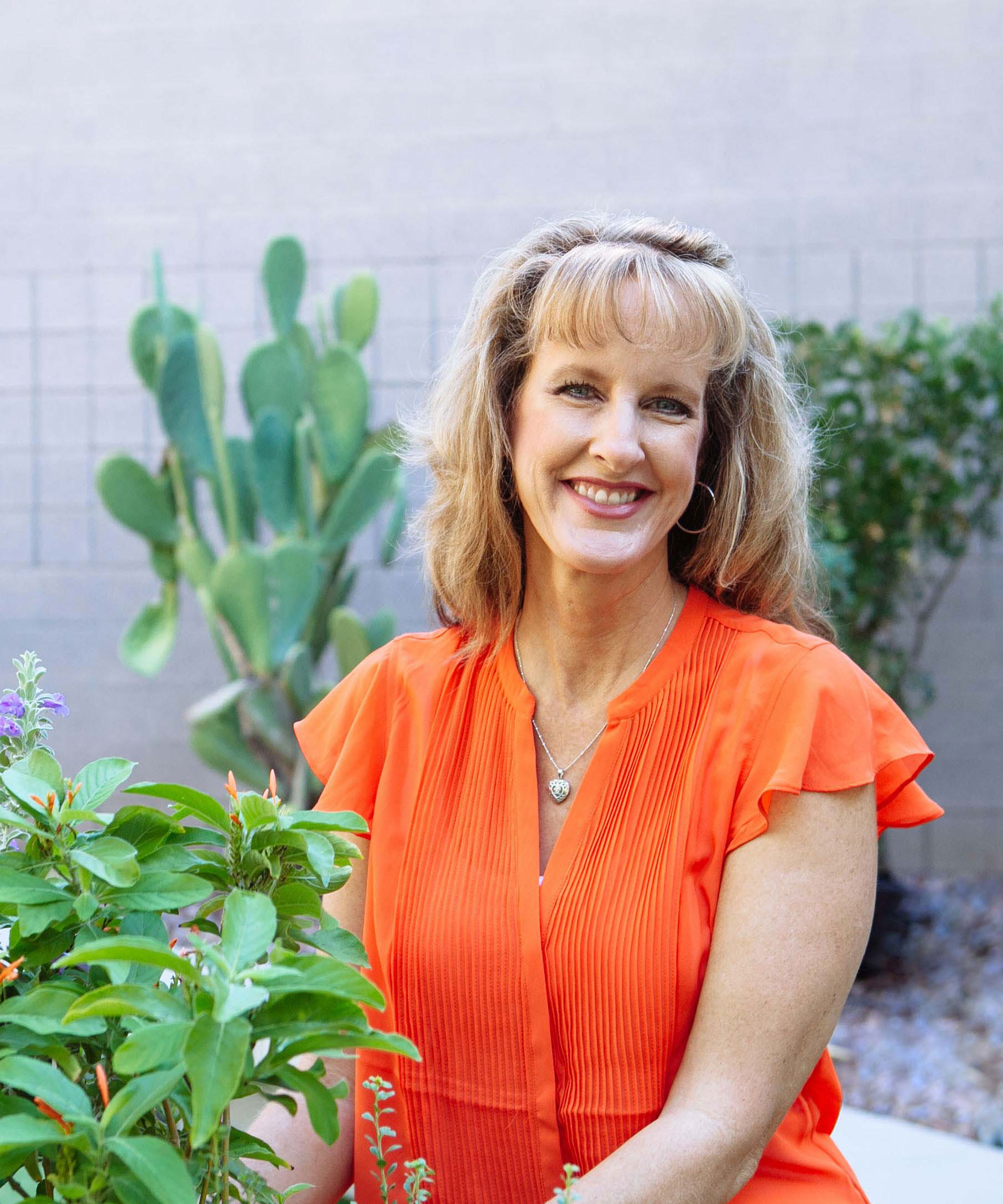
Noelle is a horticulturist, landscape consultant, and garden writer who lives in the Phoenix, Arizona metro area. Popularly known as the 'AZ Plant Lady,' for over 20 years her passion has been to inspire and teach people to create, grow, and maintain beautiful gardens that thrive in a hot, dry climate.
7. Choose the right plants to reduce the risk
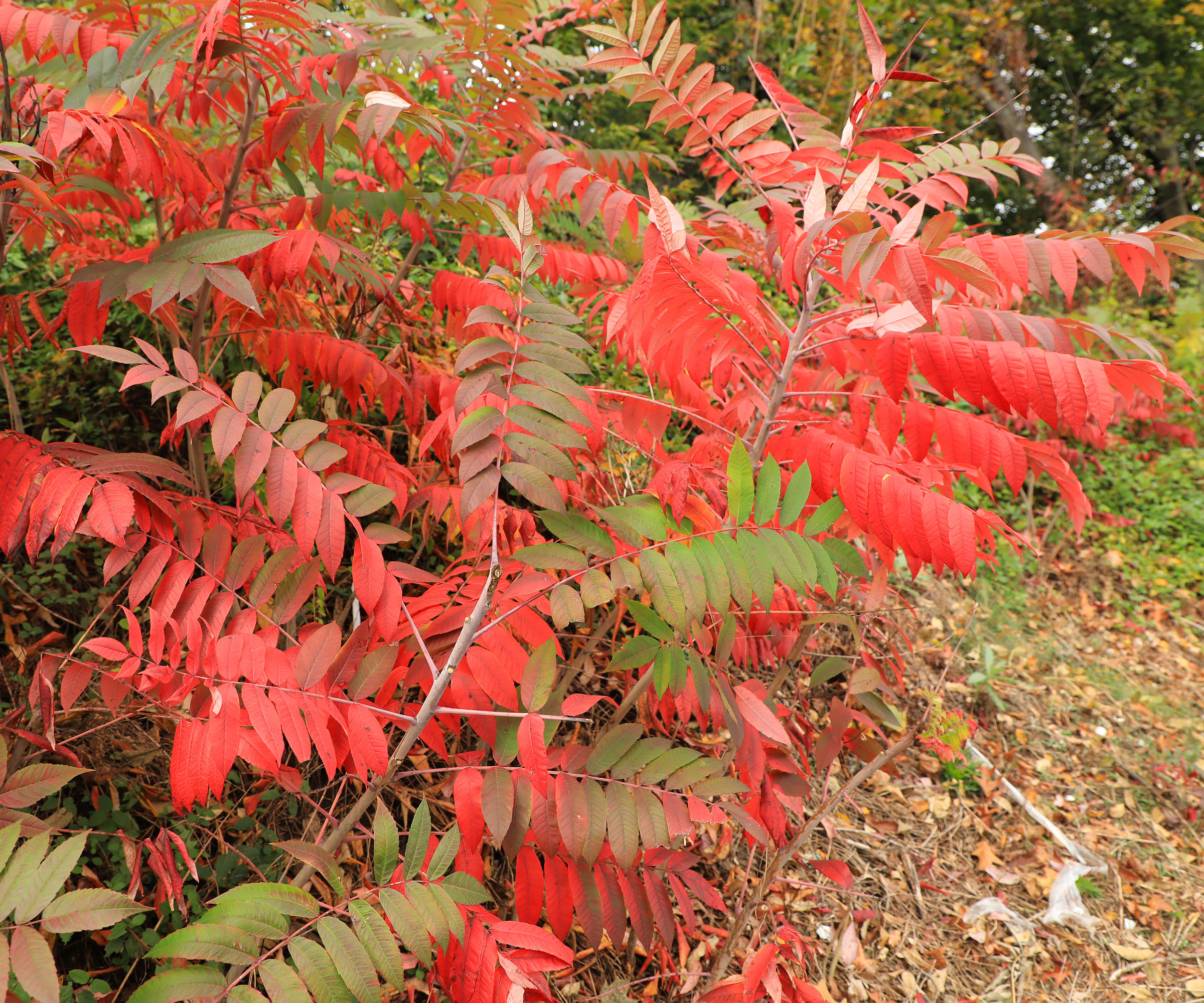
Native trees such as sumac will bounce back from wildfire damage. An added bonus in fall is the foliage transitioning from bright green to a vibrant array of colors
You will want to choose plants that you like, of course, while also reducing the risk of allowing wildfires to spread. At the same time it's a good idea to prioritize native plants that support local biodiversity and encourage suitable habitats for wildlife.
'We recommend beginning by creating an initial plant wish list, a potential palette, with plants grouped by life form and mature size,' say Adrienne Edwards and Rachel Schleiger. 'The largest plants, or already existing plants that you want to keep, are the major scaffolding to anchor your landscaping (large trees, shrubs, cacti, depending on where you live) and should be considered first.'
Experts say many native plants like sumac, yucca and catalina cherry take longer to burn and recover much more quickly. Local native plant societies and native plant nurseries in your area can provide information. The Native Plant Society of Oregon, for example, supplies advice about landscaping with native plants. Meanwhile the California Native Plant Society’s online tool Calscape is a useful research aid when you're choosing plants.
Trees and shrubs that are deciduous (shed their leaves annually) are usually more fire-resistant than evergreens. You can also find groundcover plants that have thick, fleshy leaves which are fire-resistant and do not ignite easily. Choose the best desert plants like agave, aloe and other succulents.
When looking for fire-resistant plants, look for those with an open growth structure, thick bark and leaves that have a high water content.
FAQs
How do I help my yard recover after a wildfire?
To help your yard recover after a wildfire first consult the Natural Resources Conservation Service information pages labelled 'After the Fire' to assess your property in the aftermath and discover where to find recovery assistance.
Land that has experienced wildfires can often recover without intervention, but in many cases homeowners can help by removing trees that pose a hazard, and controlling invasive species.
'Magical things happen after wildfires,' explain Adrienne Edwards and Rachel Schleiger, authors of Firescaping Your Home: A Manual for Readiness in Wildfire Country. 'Bright green slips of new growth emerge like sparkling emeralds against a charcoal backdrop. Plants that resprout from roots and charred stems emerge first. Seedlings begin to emerge after significant rains. Some species explode with exuberant growth in the absence of a competing canopy, putting on amazing floral shows.'
Fire followers are plant species that respond positively to charred soil and smoke, such as the fast-growing shrub bush mallow. With small pink flowers on slender wand-like stems, it emerges almost exclusively within the first couple of years after a fire.
If you live in a dry climate find out more about drought tolerant landscaping ideas and how to design a drought tolerant yard. Discover more about dry garden planting trends too with our guide to xeriscaping for an eco-friendly, water-wise landscaping method that embraces climate change.

Lifestyle journalist Sarah Wilson writes about garden design and landscaping trends for Homes & Gardens. She has studied introductory garden and landscape design, and also has an RHS Level 2 qualification in the Principles of Plant Growth and Development. She is a regular contributor to Homes & Gardens and Livingetc. She has also written for Country Living, Country Homes & Interiors, and Modern Gardens magazines